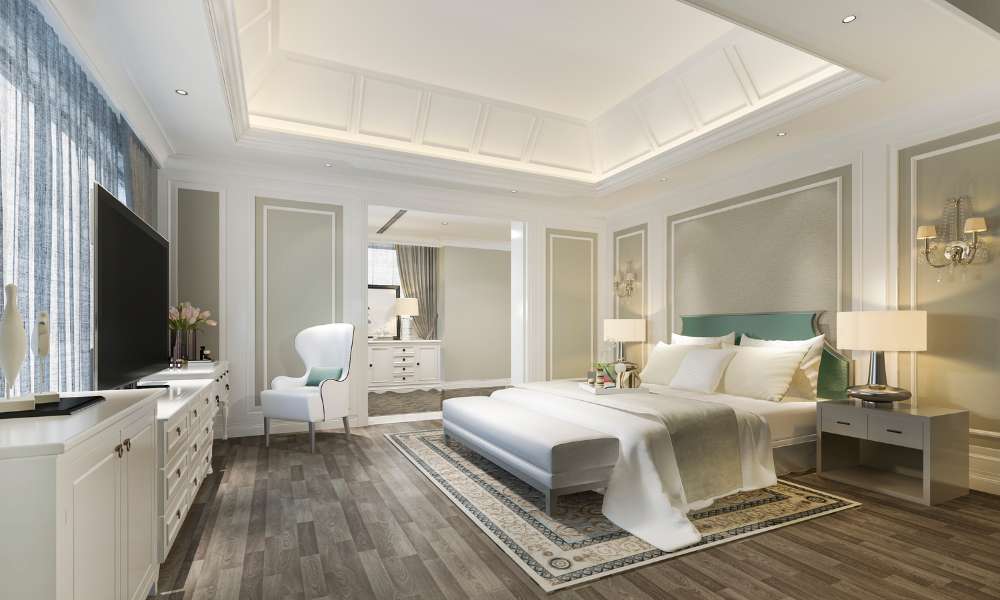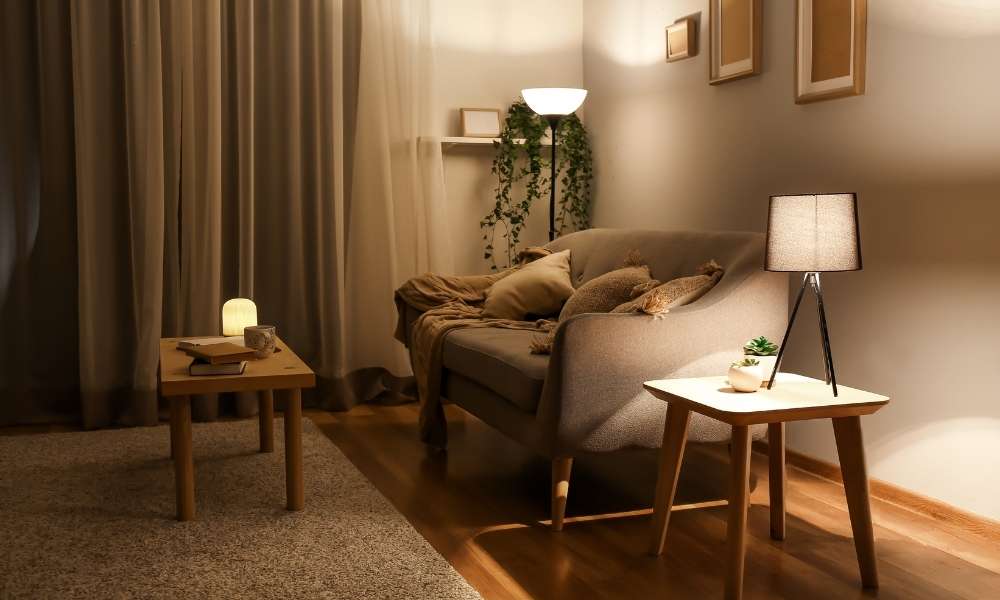Embarking on the creative journey of mixing and matching bedroom furniture unlocks a world of aesthetic and functional benefits, offering a personalized space that mirrors your unique style. Understanding the importance of cohesion, balance, and personal expression, how to mix and match bedroom furniture serves as your guide to artfully blending various pieces. This approach not only revitalizes your bedroom without the need for a complete overhaul but also allows for a dynamic and flexible decor that can evolve with your tastes. By mastering the art of mix-and-match, you embrace the freedom to experiment with different styles, textures, and colors, resulting in a harmonious and inviting retreat that stands out.
What Are Some Tips For Combining Different Materials In Bedroom Furniture?
A tip is to balance the use of different materials throughout the room. Mixing too many materials can create a cluttered or mismatched appearance. Instead, aim for a cohesive design by selecting a few key pieces that feature different materials and incorporating them strategically into the room’s layout. Lastly, consider the durability and maintenance requirements of each material to ensure that your furniture will withstand daily use and remain looking its best for years to come.
Can I Mix Different Styles Of Bedroom Furniture?
Yes, mixing different styles of bedroom furniture can create a unique and personalized aesthetic in your space. When done thoughtfully, blending various styles can add visual interest and personality to your room. To successfully mix different styles, consider elements such as color palette, scale, and proportion to ensure that the pieces complement each other harmoniously.
Utilizing Color Psychology In Bedroom Design
Utilizing color psychology into bedroom design is a strategic method to ensure the space not only looks appealing but also evokes the right emotions and mood. When mixing and matching bedroom furniture, consider the psychological impact of colors. For instance, blue hues promote relaxation and calmness, making them perfect for bedding or wall colors, while warmer tones like terracotta or peach can energize a space when used in accent pieces. By understanding the emotional influence of different colors, you can create a bedroom that not only reflects your personal style but also supports your well-being. This thoughtful application of color psychology enhances the harmonious blend of varied furniture styles, ensuring that each piece contributes to the desired atmosphere of the room.
Avoiding Clutter While Layering
Opt for multi-functional furniture such as storage beds or bedside tables with drawers to help reduce visual clutter. Incorporate decorative elements like throw pillows or blankets strategically, adding layers without overcrowding the space. Finally, be mindful of colors and textures when mixing different furniture pieces – aim for a cohesive look by sticking to a consistent color palette or incorporating complementary textures for added interest.
Exploring Layered Lighting
Layered lighting is a key component in mixing and matching bedroom furniture, offering both aesthetic and practical advantages. This strategy involves combining different light sources, such as ambient, task, and accent lighting, to enhance the room’s functionality and mood. Ambient lighting provides overall illumination, while task lighting focuses on specific areas for reading or dressing. Accent lighting highlights architectural features or decor elements. By integrating various lighting fixtures with your furniture, such as bedside lamps, overhead chandeliers, and wall sconces, you can create a dynamic and inviting atmosphere. This approach allows for flexibility, enabling you to adjust the ambiance to suit any occasion or mood.
Identify Your Preferred Style
1. Traditional
A contemporary bedroom is characterized by clean lines, minimalistic design, and a neutral color scheme. To mix and match bedroom furniture can focus on simplicity and functionality. Choose pieces that offer sleek finishes and subtle textures, ensuring they come together in a cohesive yet understated manner. This style allows for bold accents and innovative materials, creating a modern, chic space.
2. Contemporary
A contemporary bedroom is characterized by clean lines, minimalistic design, and a neutral color scheme. When mixing and matching contemporary furniture, focus on simplicity and functionality. Choose pieces that offer sleek finishes and subtle textures, ensuring they come together in a cohesive yet understated manner. This style allows for bold accents and innovative materials, creating a modern, chic space.
3. Rustic
Embracing the rustic style involves incorporating natural materials, rugged textures, and earthy tones. To mix and match rustic bedroom furniture effectively, select pieces that evoke a sense of warmth and comfort, such as a sturdy wooden bed frame paired with a vintage dresser. The key is to blend rough-hewn and distressed items with softer, more refined accents to create a cozy, inviting atmosphere.
4. Bohemian
The bohemian style celebrates eclectic and unconventional choices, making it ideal for a mix-and-match approach. To achieve a bohemian bedroom, combine vibrant colors, diverse textures, and global-inspired patterns. This style thrives on variety, so feel free to pair a modern platform bed with antique side tables or a vintage rug, allowing your creative spirit to guide the design process.
Prioritizing Comfort And Usability
The foundation of any bedroom is comfort and usability. When mixing and matching furniture, it’s crucial to keep these aspects at the forefront. Choose pieces that not only fit the space well but also offer the comfort and convenience necessary for a bedroom. A well-chosen mix of a supportive mattress, ergonomically designed chairs, and ample storage can enhance the room’s functionality, ensuring it serves as a peaceful retreat for relaxation and rejuvenation.
Distributing Visual Weight Evenly
Distributing visual weight evenly in a room is crucial to create a harmonious and balanced space. When mixing and matching bedroom furniture, consider the scale of each piece and aim for symmetry or asymmetry depending on the desired look. Using a mix of different sizes, shapes, and textures can add interest while keeping the visual weight evenly distributed.
Utilizing Multifunctional Furniture
Incorporating multifunctional furniture is a smart strategy in mixing and matching bedroom pieces, especially for those working with limited space. A bed with built-in storage, for example, can serve both as a sleeping area and a place to stow away clothes or bedding, reducing the need for additional storage units. An ottoman at the foot of the bed might offer seating, storage, and aesthetic appeal. This approach not only maximizes the utility of each piece but also allows for a cleaner, more organized space, making it easier to blend different styles and pieces into a cohesive look. Multifunctional furniture embodies the mix-and-match philosophy by combining form, function, and style in a way that’s both practical and chic.
Ensuring Accessibility To All Pieces
Mixing different wood types can add depth and character to your bedroom, but doing so harmoniously requires a thoughtful approach. The key is to find a common element that can tie the various wood finishes together, such as their undertones, grain patterns, or finish type. For instance, pairing a light oak dresser with a darker walnut nightstand can work beautifully if both pieces share a similar grain texture or if they are linked by other elements in the room, like matching hardware or a coordinating rug. This strategy allows for a diverse yet cohesive furniture collection, showcasing how diverse wood types can come together to create a warm and inviting bedroom space that’s rich in texture and depth.
Blending Different Wood Types Harmoniously
Mixing different wood types can add depth and interest to your bedroom, but it requires a careful approach to maintain harmony. To blend various wood finishes seamlessly, consider their undertones: warm, cool, or neutral. Placing a cool-toned ash wood dresser near a warm-toned mahogany bed can create a subtle yet appealing contrast. For cohesion, include accessories or textiles that incorporate both wood tones, bridging the gap between the different pieces. This strategy highlights the sophistication and elegance that mixing and matching different wood types can bring to your bedroom furniture ensemble.
Exploring Diy Options For Customizing Furniture
For those looking for a more subtle approach, consider refinishing cherry wood furniture with a lighter stain or finish. This can help brighten up the space while still showcasing the natural beauty of the wood grain. Additionally, don’t overlook the power of hardware when customizing furniture – changing out knobs and handles can make a significant impact on the overall look and feel of your pieces. By experimenting with different DIY techniques and thinking outside of conventional design norms, you can transform your cherry wood bedroom furniture into unique creations that reflect your personal style and taste.
The Final Thought
To mix and match bedroom furniture can be a fun and creative way to personalize your space and showcase your unique style. By following the principles of balance, color coordination, and scale, you can achieve a cohesive look that is both visually appealing and functional. Remember to consider the overall theme or mood you want to create in your bedroom when selecting pieces to mix and match. Don’t be afraid to experiment with different combinations until you find the perfect arrangement that reflects your personality. Start reimagining your bedroom today and create a harmonious space that truly feels like home.





